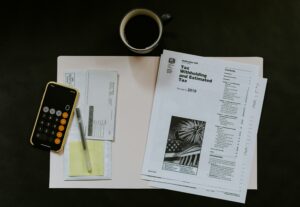BLOG POSTS ARE PRELIMINARY MATERIALS CIRCULATED TO STIMULATE DISCUSSION AND CRITICAL COMMENT. THE VIEWS EXPRESSED ARE THOSE OF THE INDIVIDUAL AUTHORS. WHILE BLOG POSTS BENEFIT FROM ACTIVE UHERO DISCUSSION, THEY HAVE NOT UNDERGONE FORMAL ACADEMIC PEER REVIEW.
By Jim Roumasset
This is to share some recent energy research from the Philippines. Some of the findings have relevance for other small economies such as Hawaii.
Green GDP and environmental taxation
Many governments, including those in the Philippines and the U.S. declare that their mission is to promote the general welfare. It is well known that GDP needs modification to better serve as an appropriate maximand, leading to various proposals to “green” the national income accounts. In Roumasset et al. 2018, we provide preliminary adjustments to national income in the Philippines including resource depletion and environmental degradation. We also suggest how green national income can be made even more comprehensive by incorporating ex ante probabilities of loss, a concept formalized in Endress et al. (2020). For small economies, comprehensive national income can be markedly enhanced by adaptation investments that lower expected losses from disasters such as flooding, e.g. through watershed restoration.
Nordhaus and Yang (1996) showed that, lacking global (or even regional) cooperation, individual economies should tax global public bads such as carbon emissions at something less than the efficient cooperative level of taxation, e.g. the (marginal) “social cost of carbon,” times a country’s share of world GDP, before adjusting for heterogeneous damages. Applying this to the Philippine case, we find that after adjusting for climate-change damages several times average world damages, optimal taxes of sulfur and particulate matter (e.g. from coal-generated power) tend to swamp optimal carbon taxes.
Electricity Policy
What is the role of government in electricity policy? Ravago and Roumasset (2018) provide an overview, including the primacy of consumer welfare and the unintended consequences of pursuing sustainability, renewability, and inclusivity within a single sector. Examples include tied-to-be-FIT renewable subsidies and “missionary electrification.” General principles of generation mix and its location and transmission including how the comparative advantage of renewable falls substantially when a location switches from an importer to and exporter.
A perennial question in most economies regards the optimal generation mix. In lieu of large programming models (which also solve for location), Joskow (2006) provides a simple screening curve analysis that selects the optimal generation mix and hours of operation for each fuel. Since coal generation has the highest fixed cost but the lowest variable cost, coal has a comparative advantage as a “baseload” fuel, being the only optimal generation source when loads are low and ramping down slightly in the lowest-load overnight hours. Combined cycle gas turbine (CCGT) plants have the second highest fixed cost and the second lowest variable cost, making them suitable for mid-peak operation (from early morning to late at night). Open cycle gas turbine plants (OCGT) have a lower fixed cost but a higher variable cost, making them only suitable as “peaker plants” (run in the late morning and early afternoon). When pollution costs are added, optimal capacity and hours of operation of CCGT expand at the expense of coal. Despite Joskow’s warning that this method is unsuitable for accommodating intermittent renewable resources, recent work by Geoffrey Heal and Cees van Kooten makes this extension possible.
Opportunity in crisis? Ravago and Roumasset (2020) review the effects of the pandemic on the generation mix. While coal is said to be a baseload fuel for electricity generation, coal generation ironically bore the brunt of the negative demand shock wrought by the pandemic. Utilities could not cut back on purchases gas generation because of “take or pay” contract provisions, and they are obligated to purchase available generation from intermittent renewables on a “first-dispatch” basis. Unfortunately, these resulted in increased average cost paid by utilities expected to be passed on to consumers. The good news is that the pause in electricity-demand growth affords the opportunity to phase in more solar and wind generation as their costs decline, lowering the need for costly subsidies to meet renewability goals.
The Philippine experience with deregulation of the power sector is reviewed in Ravago et al. (2018). Deregulation has only succeeded in lowering the rate of price increase. We describe the important work left to be done, especially the establishment of a forward market for wholesale prices.
How do artificially high electricity prices impede economic development? In Ravago (2020), we provide evidence that high Philippine prices, apparently induced by market power in both wholesaling and retailing, inhibit the growth of manufacturing. Moreover, the manufacturing growth that occurs is limited to assembly operations without substantial opportunities for backward linkages and growing the country’s contribution to global value chains. Inasmuch as productivity gains are due in large part to specialization and network externalities in manufacturing generally and manufactured intermediate exports for the global value chain, this implies an even greater importance of lowering electricity prices, especially through competition policy.
References
Endress, L.H., Roumasset, J.A., Wada, C.A., 2020. Do Natural Disasters Make Sustainable Growth mpossible? Economics of Disasters and Climate Change 4, 319-345. Early version available as UHERO WP 2016-12.
Jandoc, K., J. Roumasset, M.V. Ravago, K. Espinoza. 2018. “The Simple Economics of Optimal Generation, Transmission, and Electricity Use” in M.V Ravago, J. Roumasset, and R. Danao (eds.),Powering the Philippine Economy: Electricity Economics and Policy. Quezon City: University of the
Philippines Press.
Nordhaus, W. and Z. Yang. 1996. A Regional Dynamic General-Equilibrium Model of Alternative Climate-Change Strategies. American Economic Review, 86(4): 741-65.
Ravago, M.V., A. Brucal, J. Roumasset, S. de Guia. 2018. “Bending the Curve: The Impact of Gradual Policy Reforms on Electricity Prices,” in M.V Ravago, J. Roumasset, and R. Danao (eds.),Powering the Philippine Economy: Electricity Economics and Policy. Quezon City: University of the Philippines Press.
Ravago, M., A. Brucal, J. Roumasset and J. Punongbayan. 2019. “The Role of Power Prices in Structural Transformation: Evidence from the Philippines.” Journal of Asian Economics, 61:20-33. Also available as UH Economics WP 19-04.
Ravago, M.V. and J Roumasset. 2018. “The Public Economics of Electricity Policy with Philippine Applications,” in M.V Ravago, J. Roumasset, and R. Danao (eds.), Powering the Philippine Economy: Electricity Economics and Policy. Quezon City: University of the Philippines Press. See also WP 2016-13, Economics, UH.
Ravago, M.L. and Roumasset, J. 2020. Can COVID-19 Spark an Energy Transition in the Philippines? East Asian Forum. https://www.eastasiaforum.org/2020/06/05/can-covid-19-spark-an-energy-transition-in-the-philippines/ Longer version available as “Coal and the Energy Transition in the Philippines.” Economics Department WP 2020-09, Ateneo de Manila University.
Ravago, M.V., J. Roumasset, R. Danao. 2018. “Electricity Policy in the Philippines: Overview and Synthesis,” in M.V Ravago, J. Roumasset, and R. Danao (eds.), Powering the Philippine Economy: Electricity Economics and Policy. Quezon City: University of the Philippines Press.
Roumasset, J., M. V. Ravago, K. Jandoc, and C. Arellano. 2018. “Beyond GDP: The Natural Environment, Shocks, Energy and Economic Policy,” in R. Clarete, E. Esguerra, and H. Hill, The Philippine Economy: No Longer the East Asian Exception? Singapore: Institute of Southeast Asian Studies. Available here and here.






5 thoughts on “Energy Economics: Lessons for and from the Philippines”
Mahalos for the interesting post.
I couldn’t access all of the references, but was wondering if you had any thoughts on Bovenberg and Goulder’s tax interaction effect and how it may be applicable (or inapplicable) in Hawaii? These discussions always make me think about Coase’s insights re: least-cost solutions also, so if you have any thoughts on how that framework informs the carbon tax/generation mix questions would love to hear those also. Thanks again for taking the time.
Inasmuch as the Hawaii constitution calls for both promotion of the general welfare and stewardship of natural resources, mandates in the name of “sustainability” should only be pursued to the extent that both goals are advanced. This view tends to disqualify not only rail, which detracts from both public welfare and environmental quality, but subsidies in the name of 100% renewable energy that
depress welfare.
Goulder (along with Bovenberg and several others) caution that tax (and any other policy) interaction effects may be quite large, even swamping deadweight loss triangles. This is beyond the standard framework for green accounting (pioneered by the late Marty Weitzman) but very important for policy evaluation.
As mentioned, Nordhaus’s work with Zili Yang implies that, lacking a “climate club,” the welfare-maximizing carbon tax is less than the global social cost of carbon times an economy’s share of global damages. This would make the rational Hawaii tax on carbon something less than the barrel tax on oil.
I agree re: tax interaction’s importance for policy so I have to ask, do you think policy makers appreciate and respond to this concept? Or is it just up for discussion among academics and hobbyists (like myself)?
And thanks for clarifying Nordhaus’ “climate club” argument. I came away with the same conclusion but always wondered how it would be quantified for HI. It doesn’t seem to come up in carbon tax proposals locally but hopefully posts like this will help with this discourse.
Very few economists understand interaction effects, let alone policy makers. For example, Harvard’s most prominent development economist, Dani Rodrik, has said that dynamic effects tend to swamp deadweight loss effects because the latter are measured as the areas of small triangles. He is apparently unaware of the Goulder-Williams result that tax interaction effects can easily be an order of magnitude higher than deadweight loss triangles.
Ha! Well that’s a reply that’s just filled with hope :).
Can’t say I’m surprised though. And as a student of Public Choice I have to add that, even if policymakers appreciated this, I don’t think they have the incentives to act accordingly nor do we have the constitutional rules to enforce such actions (as exemplified by your rail example).
Thanks again for taking the time to discuss!